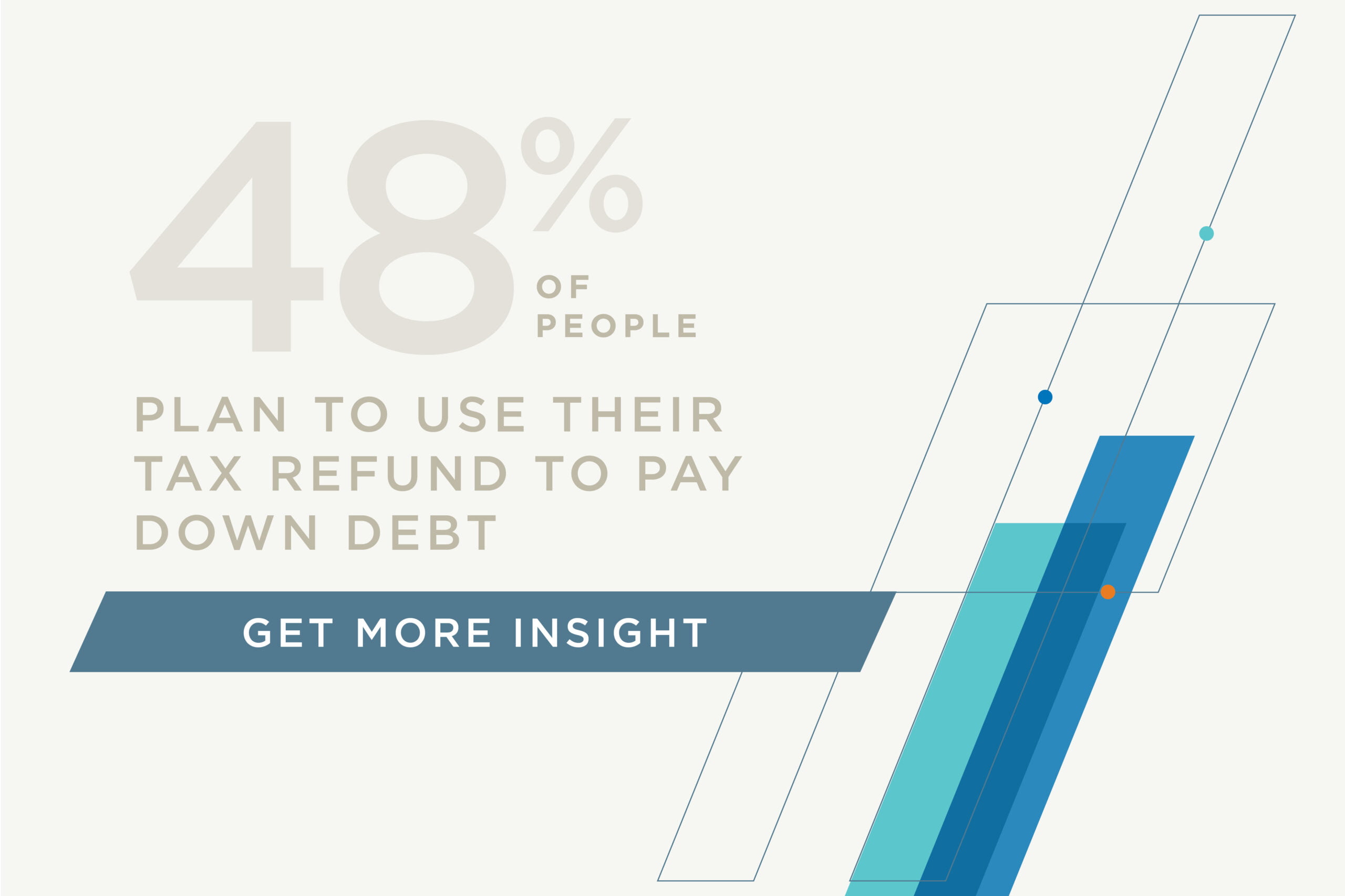Taxes are one of life’s few certainties. It is that time of the year again. The tax filing season starts sometime in late January and lasts till the 18th of April. Most American households will be eligible for refunds, and if you are early in filing your taxes, you might receive your tax refund as early as mid-Februrary.
Tax refunds amount to six weeks’ take-home pay for the average family receiving them. That’s a considerable amount that can reset a family’s spending level by creating a savings buffer that the family can rely on for the rest of the year.
Typically, banks and credit unions find themselves flushed with cash once tax refunds start flowing in. However, this year might be different as tax refunds are expected to be smaller in 2023 because there were no federal stimulus payments in 2022.
This is going to coincide with the highest inflation rate in a generation and possible recession. Consumers are going to be feel the squeeze, and every dollar, or the lack of it, counts in such challenging times.
For banks and credit unions, tax refund season presents an opportunity to educate their customers and help them better plan their spending to improve their savings and credit history.
Here is how Financial Institutions can help people make better financial decisions this tax refund season:
Highlight Savings
Savings is the buzzword. The pandemic made people realize the frailty of living paycheck to paycheck. So the desire to save is back in vogue.
Considering the last recession, which was ended in 2009, a study by the National Retail Federation stated that 48% of consumers surveyed planned to use their refund to pay down debt, whereas 39% planned to use it to build their savings. Moreover, even during the pandemic, i.e., between 2020 and 2022, the most popular use of refunds was to build savings (50% in 2020, 54% in 2021, and 51% in 2022).
While many previously used tax refunds to bulk up savings, this year might be different. Though people want to save, they might not be able to save owing to the current economic scenario and looming rate hikes by the fed to tamper spending in the coming three quarters.
In 2023, tax refunds may be used to pay off existing debt and to meet day-to-day expenses to offset rising prices.
This is the time to show people how to save using innovative methods. Banks and credit unions can highlight savings by educating their customers to refinance their credit card debt, to seek out ways to earn interest on their cash balance, to avoid interest where they can by pre-paying their loan or paying their credit card bills on time, etc.
It is important to note that thisis more than just saving dollars and cents. FIs should connect personally to explain what each extra dollar saved would mean for their family and its future. This will motivate customers to save even by foregoing certain expenses.
Incentivize Customers
People are looking to minimize their cost of living by downsizing and looking for deals and discounts to save money. Some are purchasing smaller cars and homes, are looking for used items and second-hand consumer durables when they usually would have bought new goods. The public may be willing to forego brand order to find the most cost-effective deal for a product or service.
In this economic scenario, it is essential to incentivize consumers to increase account usage and to motivate them to stay loyal to your establishment. FIs have tried including cash-bonus upgrades, cross-selling, referral offers and incentives, etc., to incentivize customers. Banks have linked individual transactions to various giveaways and sweepstakes to motivate people to transact using their bank accounts.
Here are some examples of how FIs introduced incentives and used social media to amplify their reach.
Money Talks
Use monetary incentives to refer customers from loyal members. Cardmembers can be sent a $20 statement credit after spending $100 for each new family member or friend they refer. Make sure to start your email with a message of gratitude.
Go the Extra Mile (literally and figuratively)
Reward cardholders with extra points or miles after each successful referral they recruited and get them going, and redeeming, sooner.
Sweepstakes Create Excitement
You can also count individual purchases as entries to various sweepstakes to keep cards top of the wallet and incentivize spending. A card swipe for a chance to earn big will be well received. Plus, it will drive increased card usage.
Educate Customers With Your Connections
For FIs to gain traction, there are no alternatives to this option. Banks and credit unions will have to take up educational campaigns to help people understand the financial concepts and, in turn, gain their trust and confidence.
Topics related to improving individual financial health, budgeting, keeping credit-card debt in check, investments and personal finance are garnering a lot of attention. FIs can benefit by offering investment advice, tips for building better credit for gaining consumer attention and trust.
Does your FI have an investment arm or partnership? Provide your customers investment advice through your partnerships to help them through current inconsistent and changing market conditions.
Other FIs offer customers helpful information, interactive videos, and simulators through a partnership to help improve customers’ credit health.
Banks and Credit Unions Can Make the Most of The Tax Refund Season By Simply Helping Customers
We are all in this odd economic climate together. Therefore, for FIs to benefit from this tax refund season, they will have to help their customers achieve their financial goals. This will help FIs grab a share of the consumer wallet and retain customers.
